
Follow me:
Españlo
English
There are lots of stories about it, but nobody knows exactly why. We can only speculate on the reasons based on historical facts. It´s supposed that the guitar suffered an accident. This assumption is based on two details. One is the maple band that stretches all along the body and neck, the other is the Crown inlay in the headstock.
As you all know, the Les Paul model went through big changes in 1961 because of the low sales volumes of the model, and Gibson decided to re-design it. Les Paul himself opposed to this model (SG), saying “it wasn´t his guitar”. Even though there were some runs of the guitar (SG) with the Les Paul signature stamped on them, Gibson gave in and started to use the “crown” inlay on the headstock. Below you can see a picture of an original headstock from around that time. They also experimented with different scrolls and combined mahogany and maple necks trying to solve the common neck breaks.
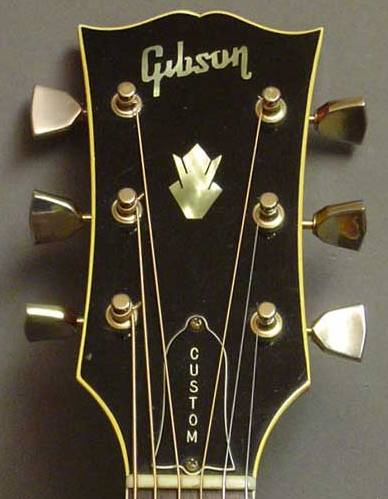
Hence those circumstances the theory that the guitar must´ve suffered an accident around those dates and the neck was replaced. This fact is more credible as most repaired guitars from that time show the Crown inlay headstock. That´s why Old Black has the Crown inlay instead of the Les Paul signature, apart from another important detail that I will comment on at a later stage.
Back to the neck work, some luthiers and manufacturers of Old Black replicas, have chosen to paint the stripe located at the back, which is a lot easier and not all have the equipment/ability to recreate it using an already built guitar (it´d be easier if starting from scratch). In this project, the owner and myself want the replica to be as close to the original as possible, hence the extra work.
The solution is to create a maple stripe inlaid in the guitar, for which firstly the routing has to be done. To do this I had to design and make special tools for the job.

Once done you can see channeling through the body and neck is not very deep, ensuring not to reach the truss rod, but enough to strengthen the body and neck and look good on the aesthetic side of things.
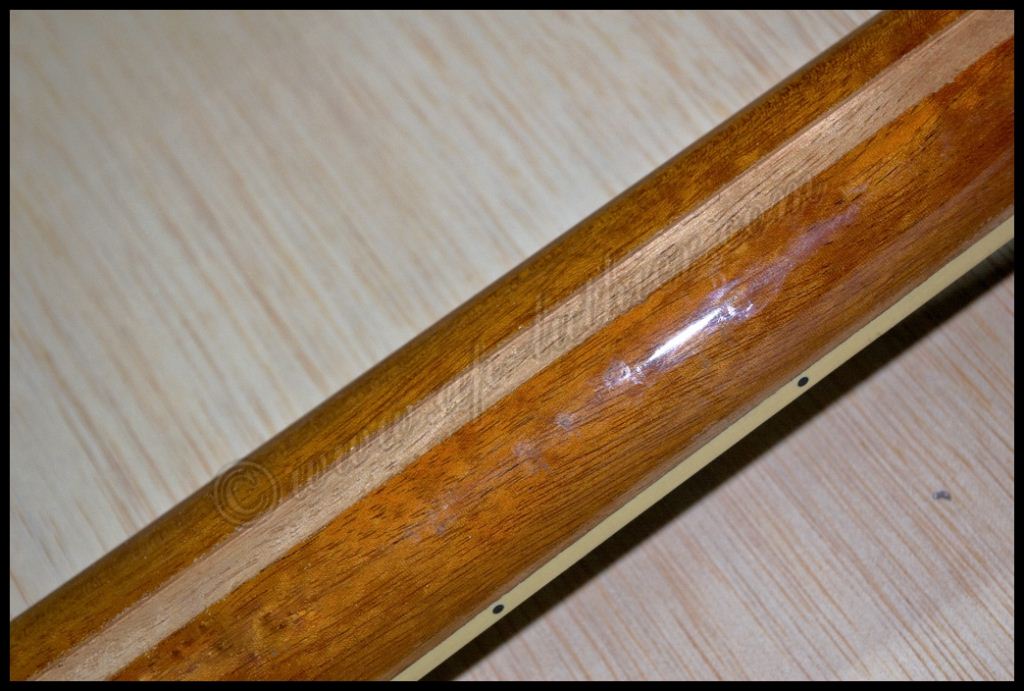
The milling is quite difficult, as you can see, as it´s not the same to work on “virgin” wood and give it the shape needed than working with an already crafted instrument where the luthier has to adapt to the irregular shapes already in the guitar.
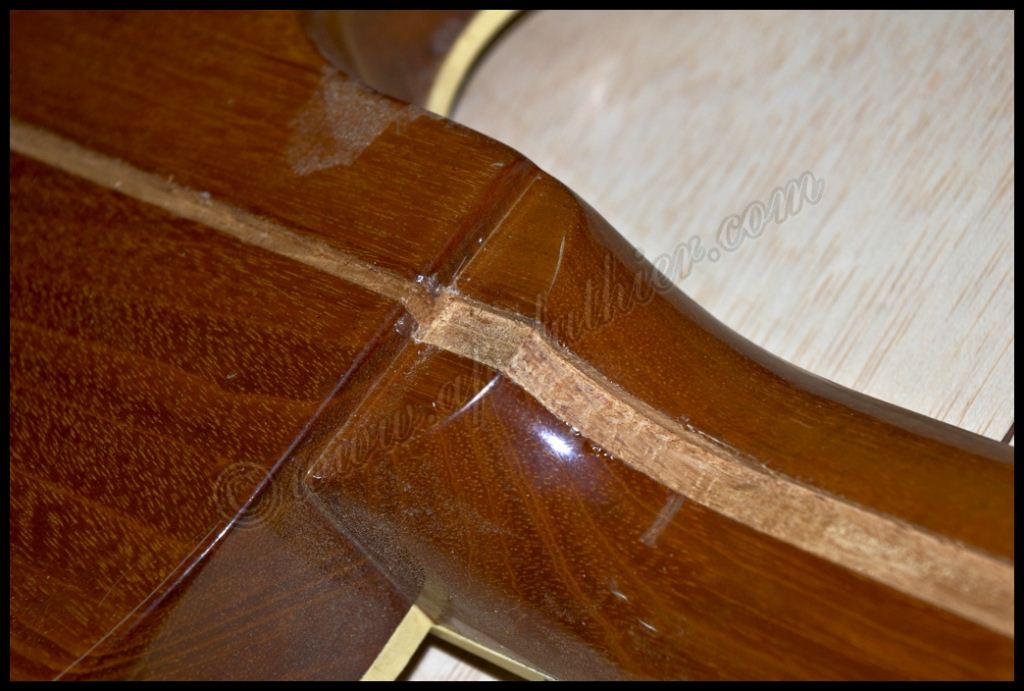
The channeling from the bottom until

the headstock

Preparing the hard maple strip for
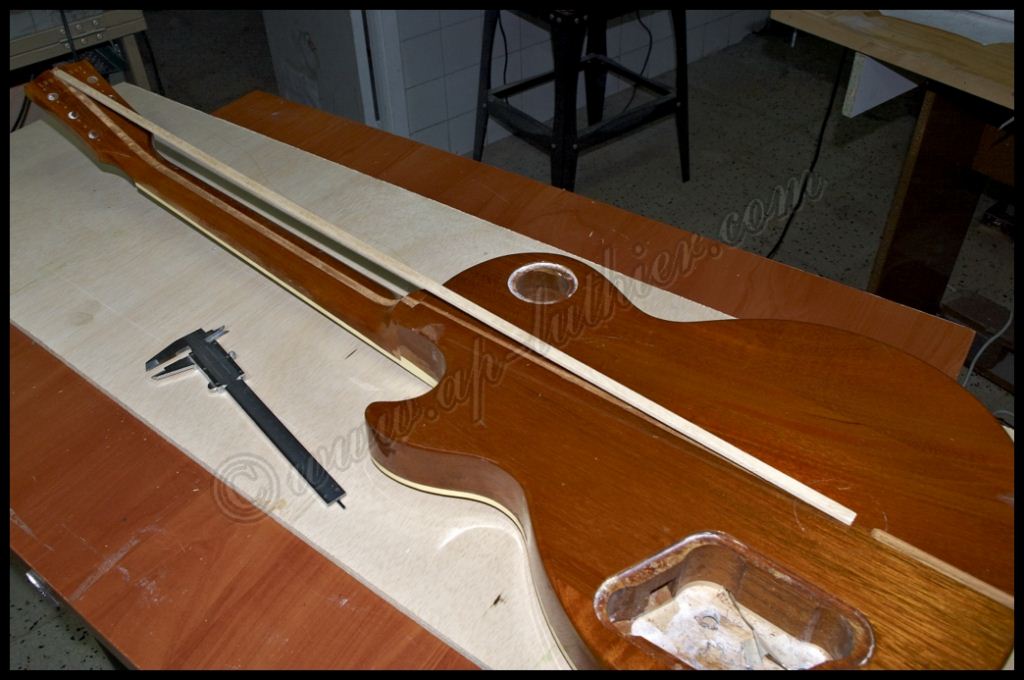
giving it shape thermally.
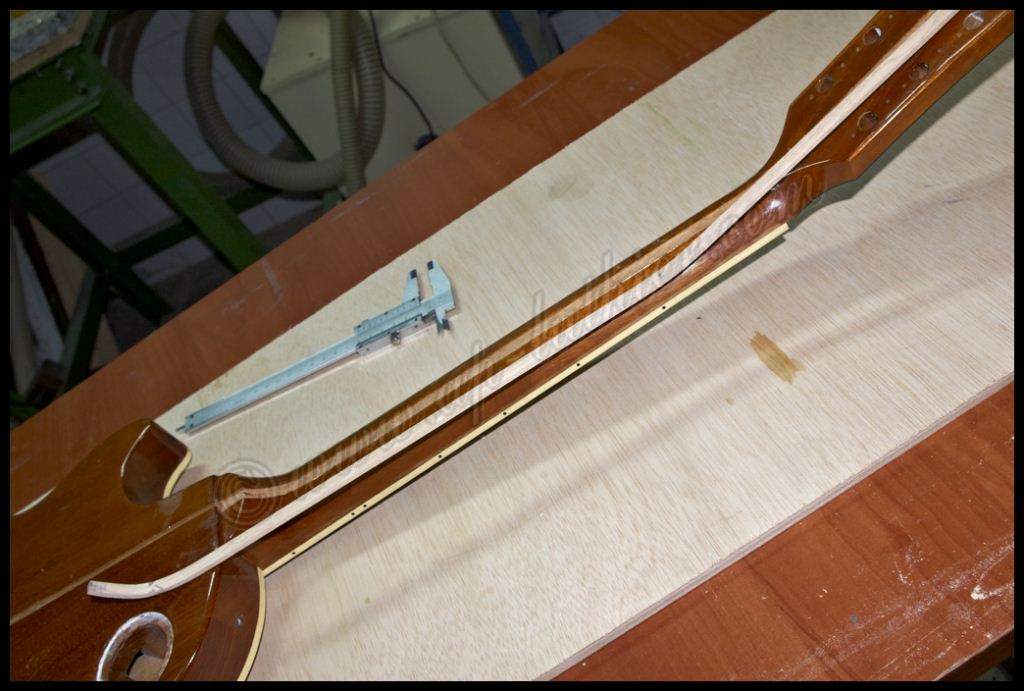
Checking that everything fits correctly
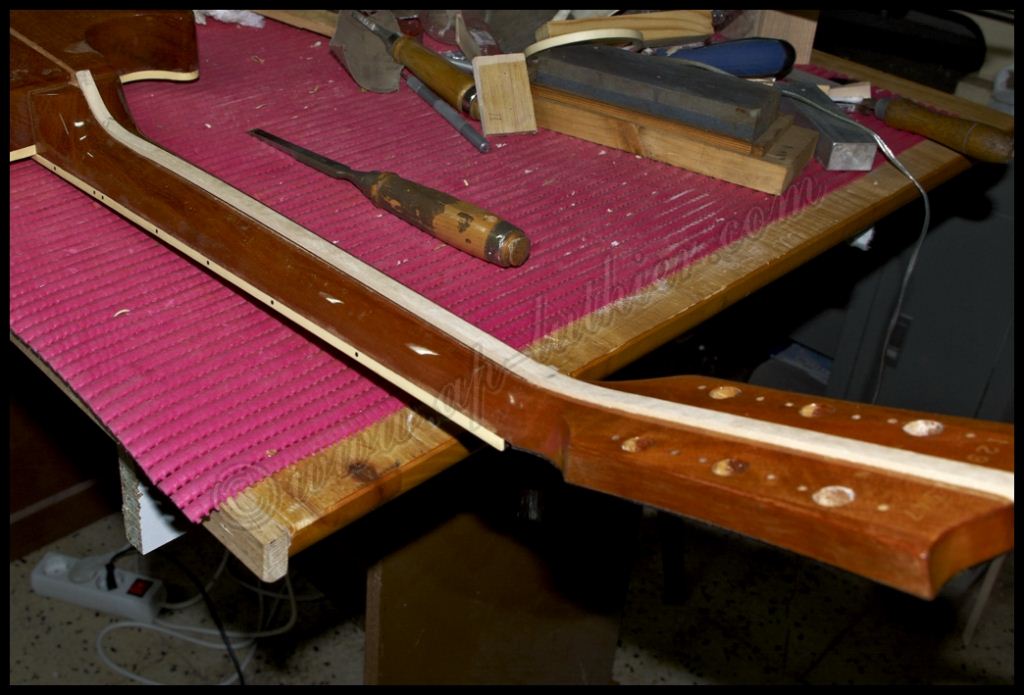
readjusting the levels
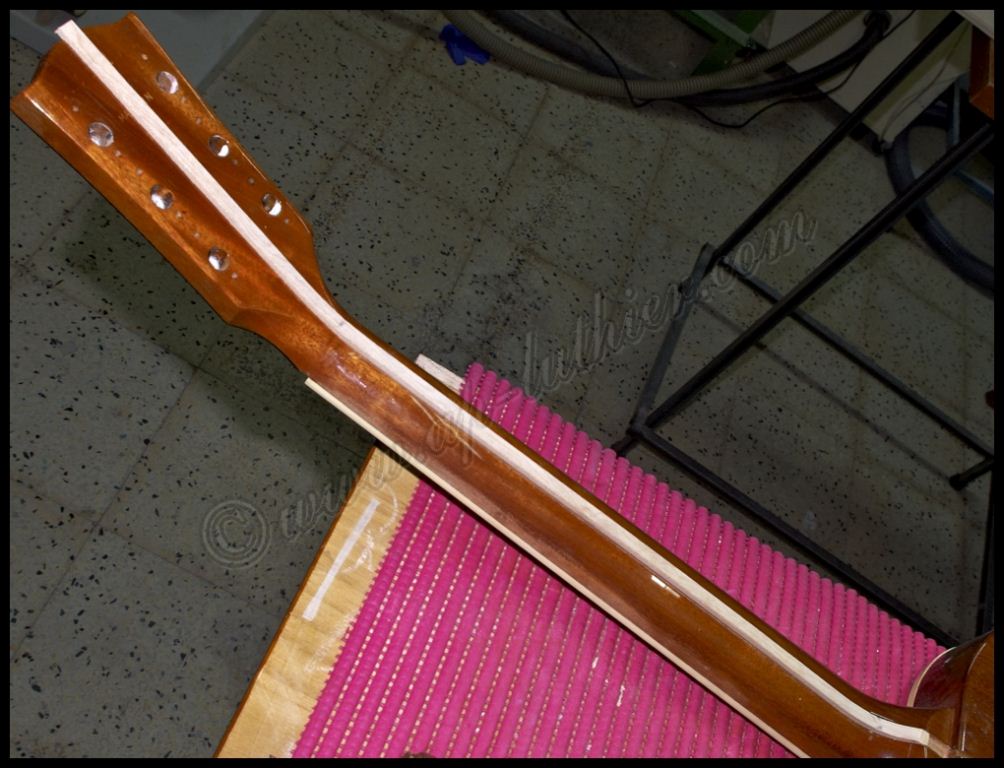
and glueing it, beginning from the bottom area

then all along the neck

Once the maple strip is matched and glued to the curved surface of the neck, it looks like a composite neck.
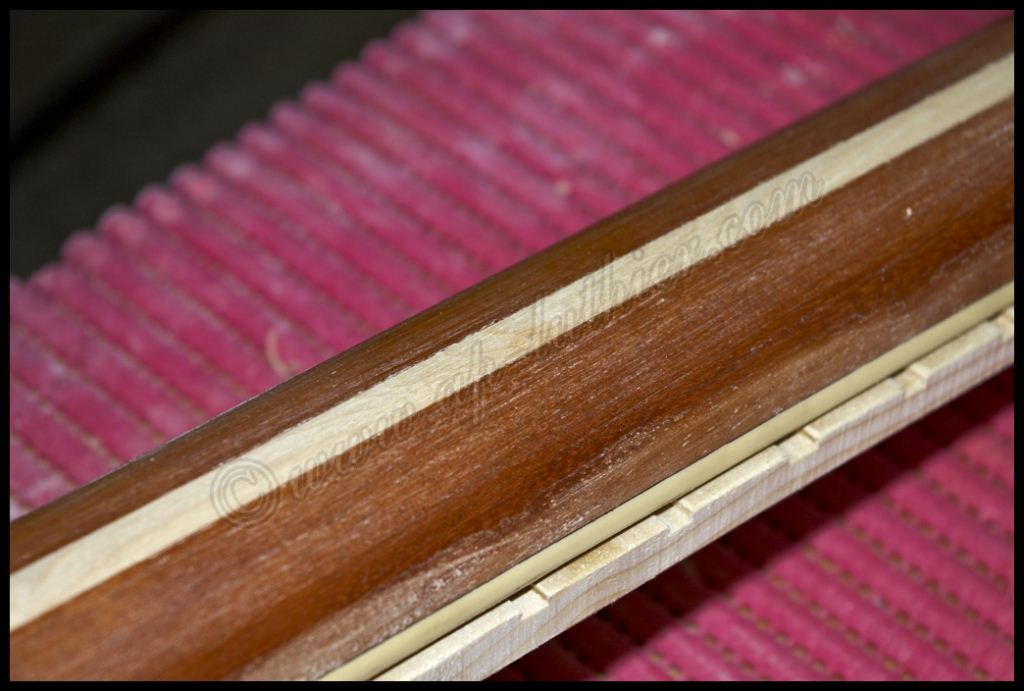
Detail of the back of the neck.

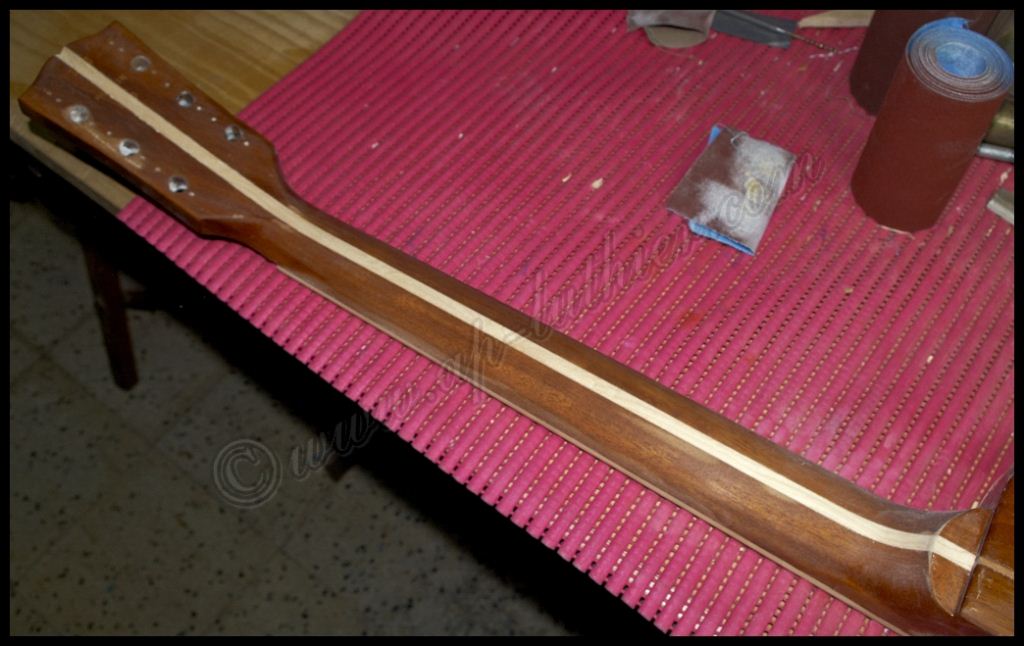
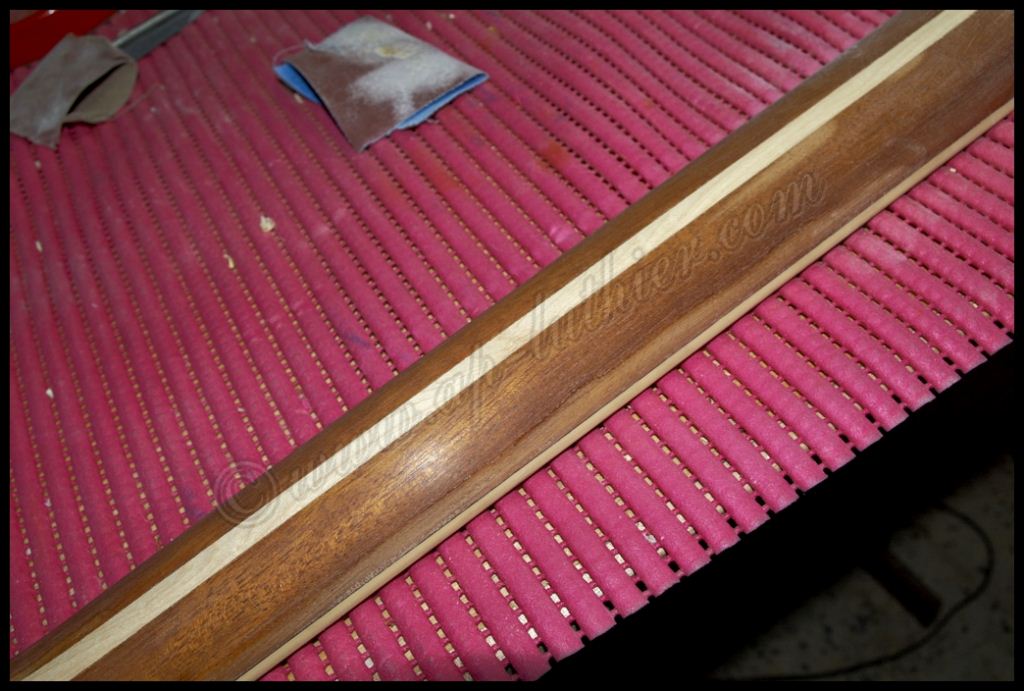
Interestingly, the “channeling” does not have maple all along its surface. There´s an area where not only the shape it´s irregular, but if you look closely at the first pics, you´ll notice it´s empty. Another mystery to clarify…
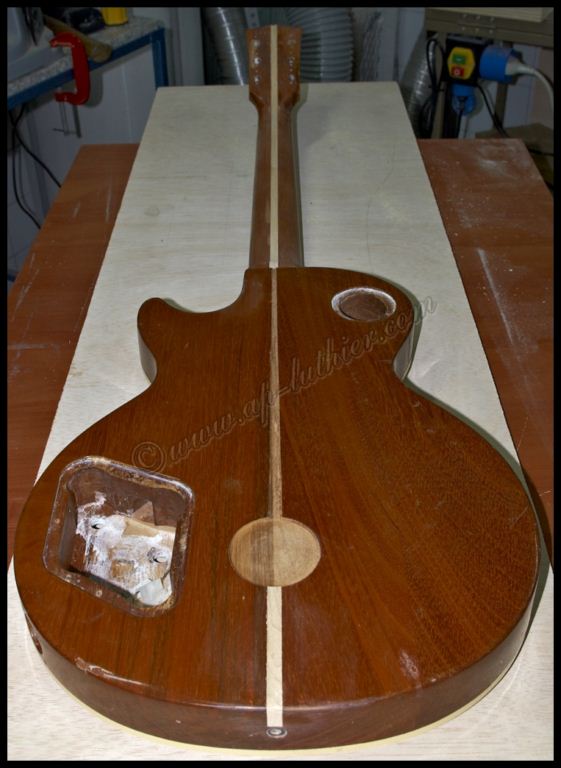
After the previous work had been done, I started to work on the famous “mystery” back plate, which remains unknown as to why it´s there. Nobody knows what´s underneath. Lots of speculation on the possibility that the body of the guitar also suffered an accident and the plate is there as a structural reinforcement, another says it´s just some access to adjust the bridge (not a real option as it´s in a different position, in any case it does match the Bigsby position on the front of the body). In my opinion the explanation is not as complex as the stories circulating around: possibly when they tried to add the mini-switch currently located between the volume and tone knobs and realized that it was in the wrong position, they had to move it to the right place and therefore the cavity had to be covered. In our case, we´re only interested in the aesthetics and it´s more than enough to just mill it slightly in order to fit the plate (same as the pickup selector cover).
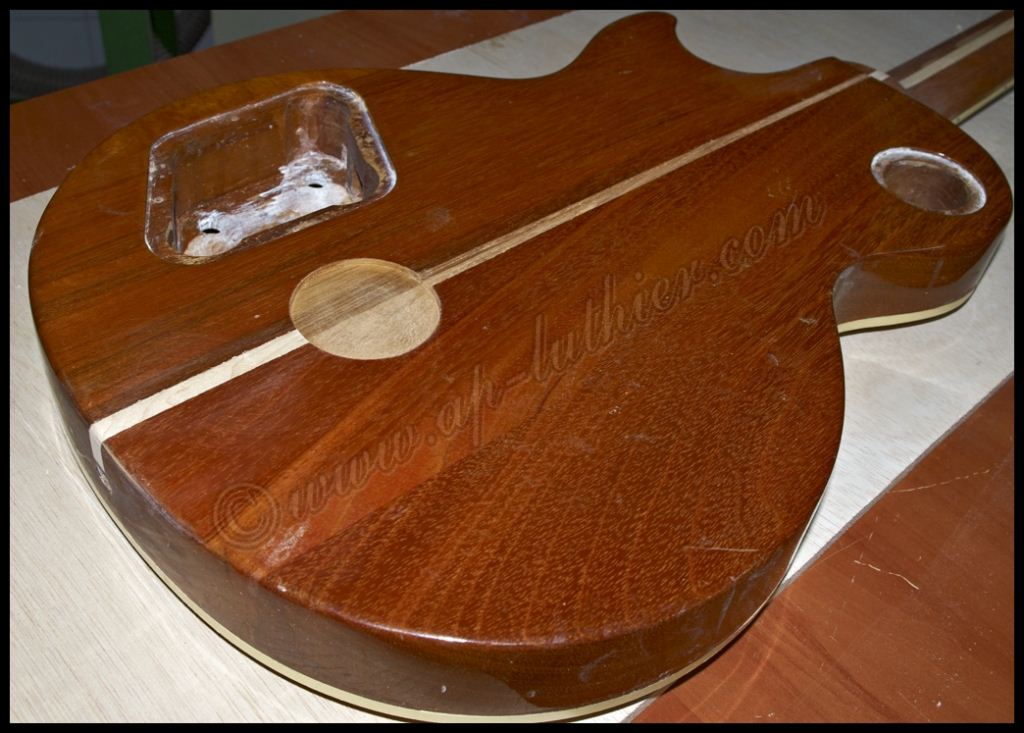
A couple views of the body´s back
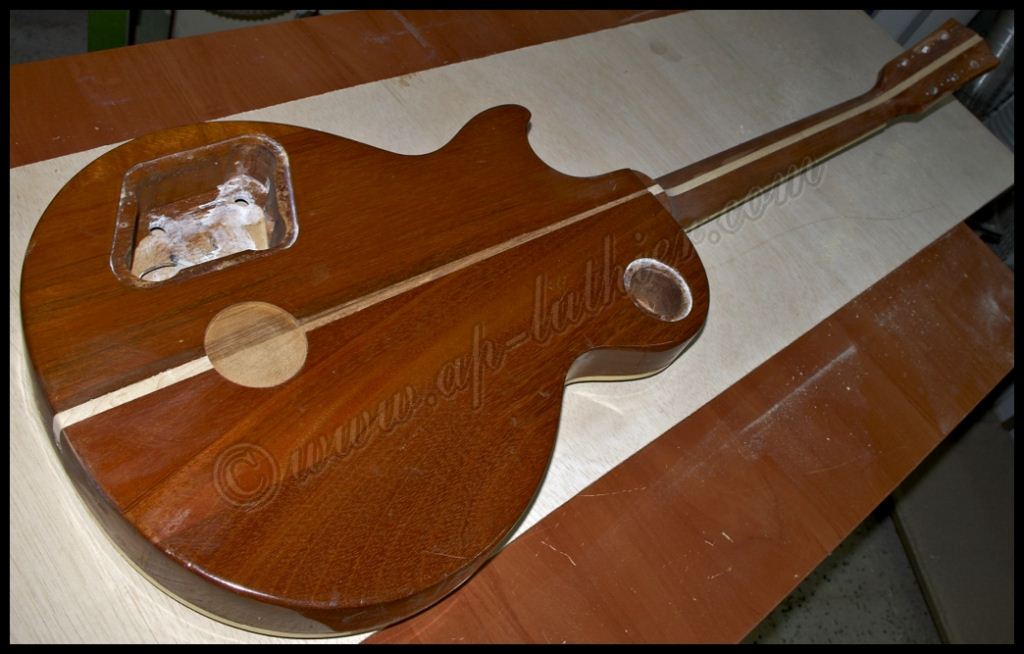
and also the front
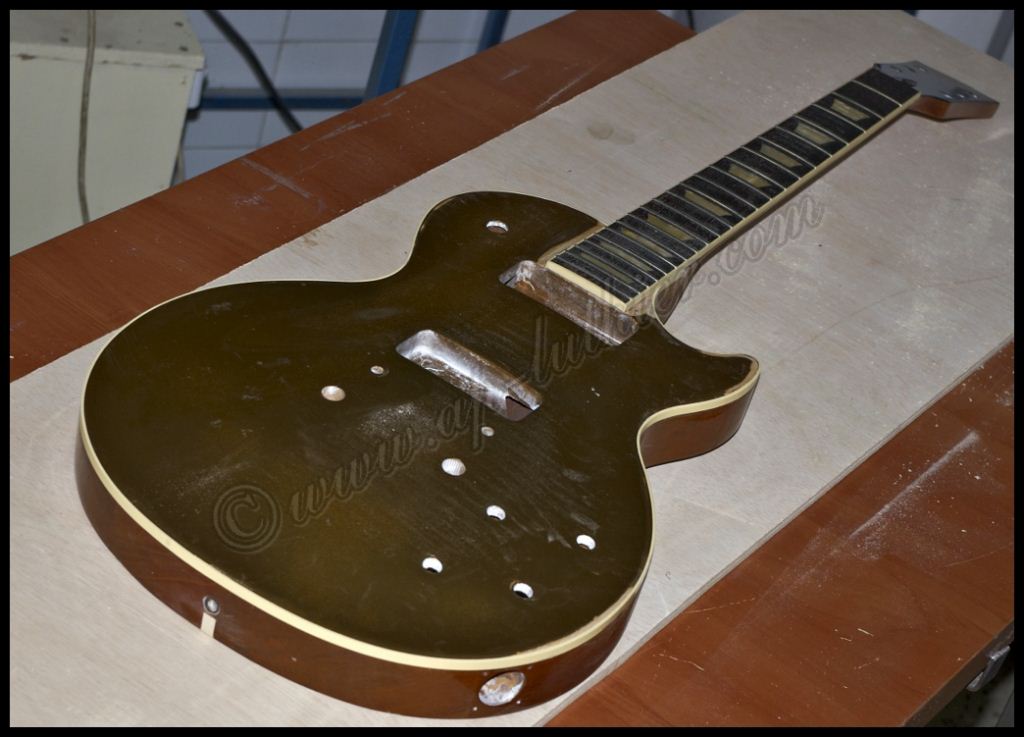
Another noticeable modification is in the headstock. It´s not known whether the binding was removed or if the intention was to add it. In any case, the space for it is there and will also be done in our guitar.

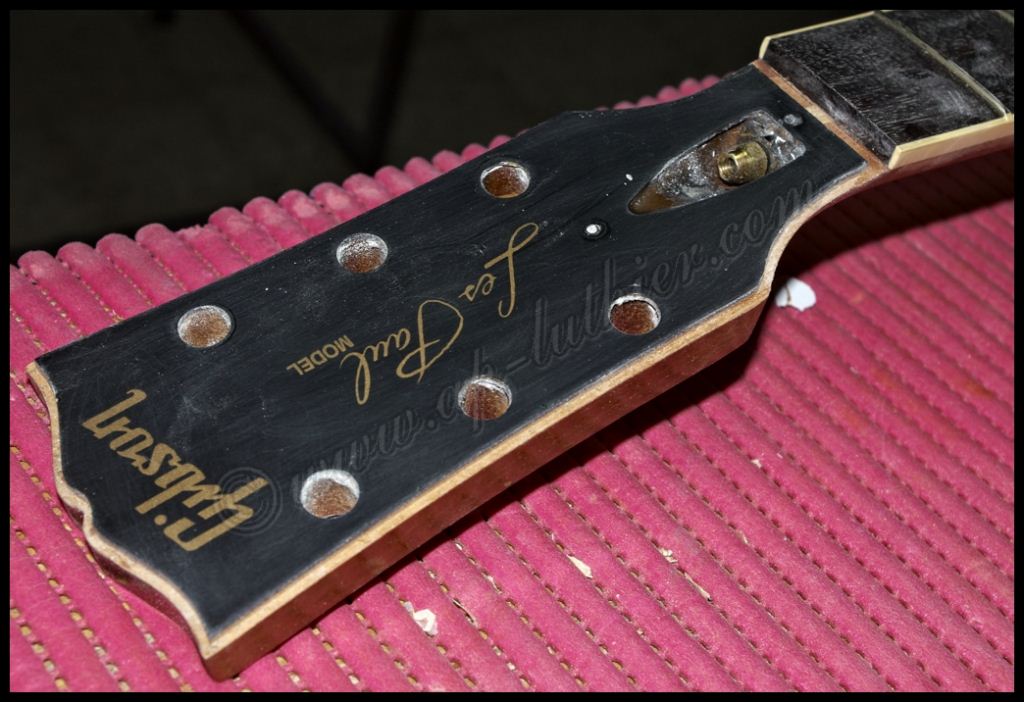
Nevertheless here´s one of the things that really surprises me from a well renowned company. One would expect to find wood, but in this occasion what I found was an acrylic sheet. I sanded the Gibson logo and it wouldn’t go away, and I thought it was some really deep serigraphy work that would disappear as I kept sanding like in other guitars, but soon I realized it´s golden acrylic lettering. It´s a great idea but not for a musical instrument. Breaks in this type of material are much more difficult to repair as when it cracks it “explodes”.
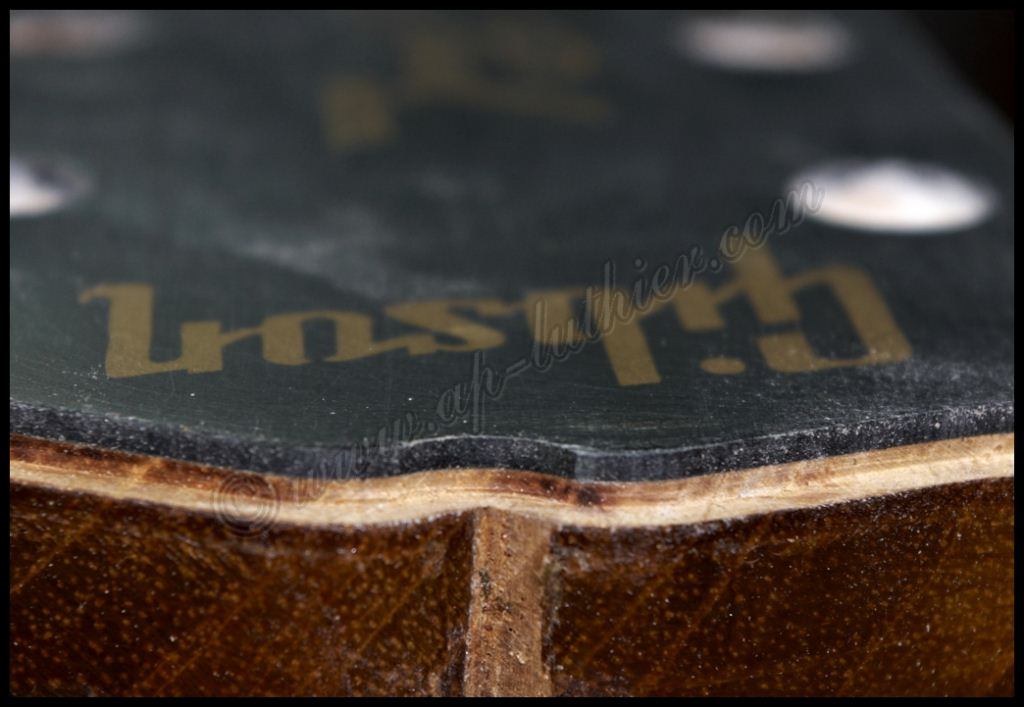
A 1/16” sheet is on the surface of the headstock. It will need to be removed as it´s impossible to make the relic effect as it is. Acrylics don´t tear nor break in the same way as wood, hence making it very difficult to manage the same relic effect, unless using some kind of pigment.
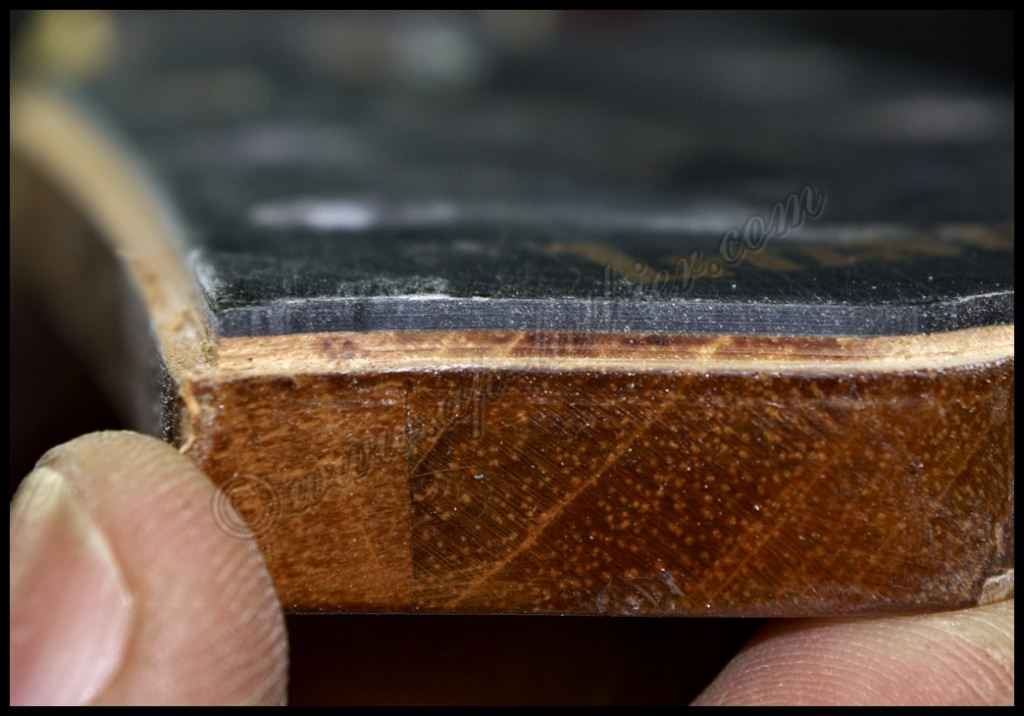
Previous page Next page